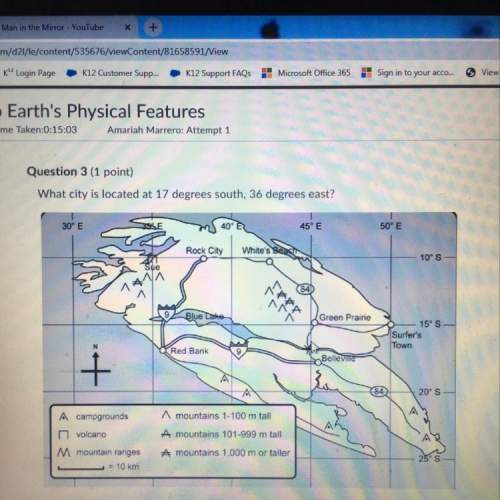
Chemistry, 17.10.2020 01:01 jholland03
ACIDS AND BASES:
Household Chemicals
You are probably wondering why you should bother with all this
chemistry, anyway. What does it have to do with real life?
The rest of the articles in this unit are about different applications of
chemistry in daily life. Some of the most common uses of chemistry are in
cooking and cleaning.
One common group of chemicals is called acids. Many foods contain
ingredients that are acids. Vinegar, used in pickling, is mainly acetic
acid (HC2H30 2). Citric acid (HC6H70 7) is found in oranges, lemons, and
grapefruits and is used as a preservative in many canned foods. Sour milk
contains lactic acid (HC3H50 3), and baking powder also contains a type of
acid.
Acids are also used for cleaning. Vinegar and lemon juice are old
standbys for cleaning glass or china. Boric acid (H3B03) is used in eyewash,
and sulfuric acid (H2SO 4) is used to clean corroded metals.
From the examples above, you might guess that most acids have a sour
taste. The chemical formula for an acid usually shows an H for hydrogen at
the beginning. Chemists test for acids using litmus paper, a special kind of
paper that turns red in acid.
Another group of chemicals is known as bases. Many comm9n
household chemicals are bases. Most drain ~ cleaners contain sodium
hydroxide (NaOH), a very strong base that is commonly known as lye.
Washing soda (NaC03) and baking soda (NaHC03) are both bases.
Ammonia (NH3) is a base that is used in many kinds of household cleaners.
Milk ·of magnesia (Mg(OH)2) and aluminum hydroxide (Al(OH)z) are both
bases used in common antacid medicines.
Most bases are bitter-tasting and have a slippery feel to them. The
chemical formulas for many bases show an (OH) group on the end. Litmus
paper can be used to test for bases, too, because it turns blue when it
touches. a base.
Both acids and bases are very reactive; that is, they read easily with
other chemicals. This is part of what makes them such good cleaners; they
react with the dirt and grease. But this also makes them very dangerous. A
strong acid or base can burn· a person very badly, because it reacts with the
water and other things in the skin. Acids and bases react very easily with
each othe~. If an acid and a base are combined, they will react together to
form water and some kind of salt. When this happens, the acid and the base
have neutralized each other.
Directions: Complete this review by filling in the blanks.
1. and are two common groups of
chemicals that are very reactive. , , and
are examples of foods containing acids. Three cleaners
that are bases include , , and _
There are many ways to tell an acid from a base. Acids taste
, while bases taste also feel
slippery to the touch, but don't. Scientists test acids
and bases using paper. This special paper turns
when it touches an acid and _

Answers: 2


Other questions on the subject: Chemistry

Chemistry, 22.06.2019 06:30, irvinbhangal2
What effect might melting sea ice have for people who live in coastal areas?
Answers: 1

Chemistry, 22.06.2019 11:00, micro7909
Predict the products of the following acid-base reactions, and predict whether the equilibrium lies to the left or to the right of the reaction arrow. part ao2-(aq)+h2o(l)< => express your answer as part of a chemical equation. identify all of the phases in your answer. o2-(aq)+h2o(l) < => oh-(aq)+oh-(aq)part bpredict whether the equilibrium lies to the left or to the right of the equation in previous part. h2o is a stronger acid than oh–, so the equilibrium lies to the right. h2o is a weaker acid than oh–, so the equilibrium lies to the left. h2o is a stronger acid than oh–, so the equilibrium lies to the left. h2o is a weaker acid than oh–, so the equilibrium lies to the right. part cch3cooh(aq)+hs? (aq) < => express your answer as part of a chemical equation. identify all of the phases in your answer. ch3cooh(aq)+hs-(aq) < => h2s(aq)+c2h3o2-(aq)h2s(aq)+c2h3o2-( aq)part dpredict whether the equilibrium lies to the left or to the right of the equation in previous part. ch3cooh is a weaker acid than h2s, so the equilibrium lies to the right. ch3cooh is a weaker acid than h2s, so the equilibrium lies to the left. ch3cooh is a stronger acid than h2s, so the equilibrium lies to the right. ch3cooh is a stronger acid than h2s, so the equilibrium lies to the left. part eno2-(aq)+h2o(l) < => express your answer as part of a chemical equation. identify all of the phases in your answer. no2-(aq)+h2o(l) < => part fpredict whether the equilibrium lies to the left or to the right of the equation in previous part. hno2 is a stronger acid than h2o, so the equilibrium lies to the right. hno2 is a weaker acid than h2o, so the equilibrium lies to the left. hno2 is a stronger acid than h2o, so the equilibrium lies to the left. hno2 is a weaker acid than h2o, so the equilibrium lies to the right.
Answers: 1

Chemistry, 22.06.2019 12:30, AnastasiaJauregui
Which of the following describes a compound? (hint: carbon and oxygen bo a. a piece of pure carbon, containing only carbon atoms b. oxygen gas surrounding a solid piece of carbon c. a substance made of two oxygen atoms for each carbon atom carbon and oxygen atoms mixed without being bonded together
Answers: 1
You know the right answer?
ACIDS AND BASES:
Household Chemicals
You are probably wondering why you should bother wi...
You are probably wondering why you should bother wi...
Questions in other subjects:

Mathematics, 04.02.2020 17:57

History, 04.02.2020 17:57

Mathematics, 04.02.2020 17:57

Mathematics, 04.02.2020 17:57


Mathematics, 04.02.2020 17:57




Biology, 04.02.2020 17:57




